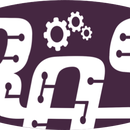Introduction: Simple Smart Home Meter
The monitoring of water and energy consumption is very important so that we can develop strategies to reduce and optimize this. Systems that perform this kind of task already exist, however, the recent water crisis in São Paulo has caused attention to be focused on the conscious use of water and power supplies, thinking about it, we have developed a Simple Smart Home Meter that can be done by yourself.
The goal is to have an individual control system consumption so we can identify who are the people who may be performing inadequate resource consumption and so act in awareness of these and/or even limit their consumption.
This project was developed and presented at the Intel IoT RoadShow 2015 - São Paulo and will also be used in 'Unified Engineering II Discipline' at Universidade Federal do ABC (UFABC).
Step 1: Step1: Materials
Circuit
[1] Intel Edison with Arduino Board
[1] Water Flow Sensor YF-S201
[1] Water Blocking Solenoid Valve 12V (NF)
[1] Grove LCD RGB Backlight
[1] Membrane 4x4 Matrix Keypad
[1] Grove Base Shield V2.0
[1] Grove Smart Relay
[1] 12V/2A Power Supply
[n] Jumpers Wires
[n] Grove cables
[n] Wires
Hydraulic and Mechanichal System
- The rest depends on how you want to mount your system.
Step 2: Step 2: Mounting the Hydraulic and Mechanichal System
You decide how to mount the hydraulic and mechanical.
In our system we use wood for the mechanical system and for hydraulic system we used a 6L gallon water for tank and several such connections 1/2 " to attach the reservoir, the valve, the sensor and the faucet.
Step 3: Step 3: Mounting the Circuit
We recommend that you carry out the assembly and test one element at a time so that it is easier to solve possible problems.
Circuit Schematic building..
Step 4: Step 4: Code
The code is still being developed. You can follow the development in GitHub.











